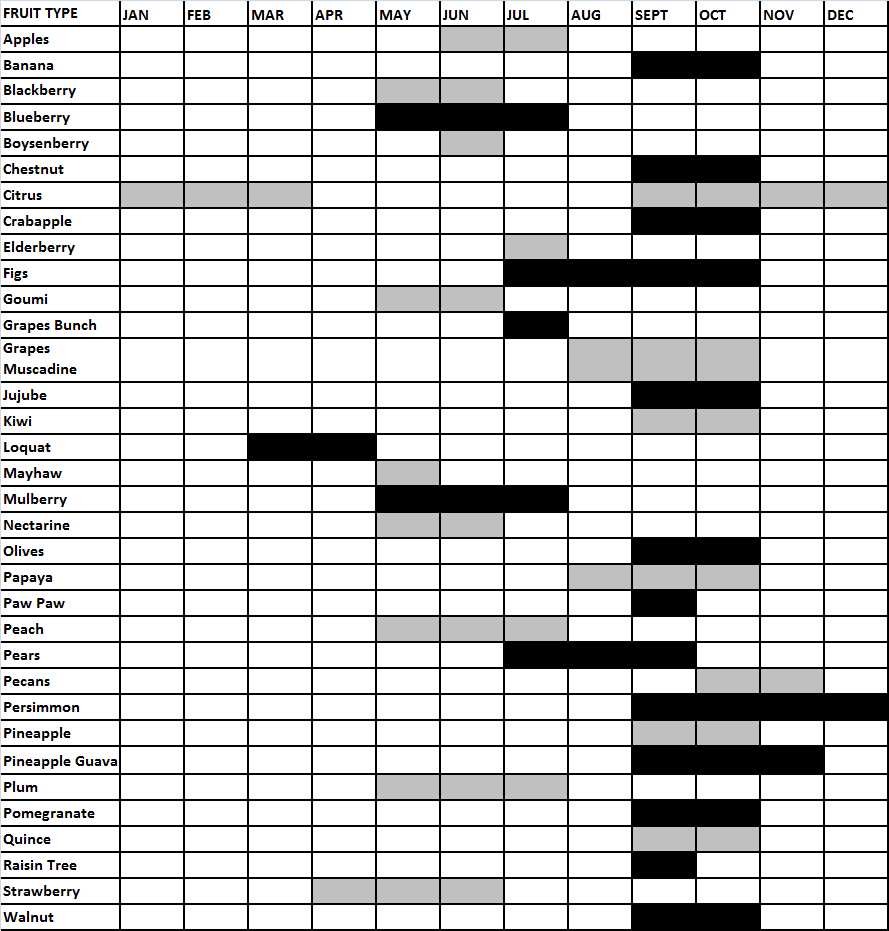Â
 Choosing the right variety of fruit tree for your climate can be challaging. There are several factors that you should think about before you go out and buy a fruit tree. Start out by getting to know your climate. Fruit trees require things like correct chill hours, disease tolerance if your in a humid growing zone, to be grafted on the right root stock to combat various soil condition and insects in your area. Many need pollination to fruit well. And lastly but most import is to think about how you’ll use your fruit. Plant fruits that you will enjoy eating or giving the surplus away. We are blessed in the deep south to be able to grow a wide range of tropical and temperate fruits. We live in an area that is possible to have something ripening every day of the year. So take the time and do a little research to choose your fruit wisely. It’s often the key factor to an orchard is easy to maintain and highly productive.
CHILL HOURS
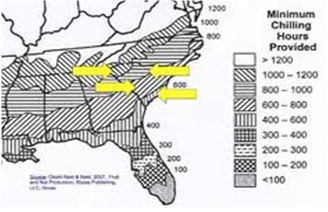
Many fruit trees like apples, peaches, pears, plums, etc., need a certain amount of winter dormancy (resting phase) to develop their leaves and fruit buds for the coming year. This dormancy period is triggered by colder weather and shorter days, and the tree will stay at rest until it has just the amount of cold weather it needs. Fruit tree folks measure this period in terms called chilling units or chill hours.
Chill hours are accumulated when the temperatures are between 32 – 45 degrees Fahrenheit, BUT any hours below 32 don’t count. THEN when the temperature rises to 60 degrees and above you start losing the hours you had accrued. Confusing, huh? Fortunately, university research stations, NOAA, and the USDA keep track of all that, so you don’t have to. They even publish maps showing the average number of chill hours across the country. For folks in Florida, Georgia, Alabama, and the Carolinas Agroclimate is a great site for getting the latest information on chill hours in your area.
We also simplify this by letting you know which USDA Gardening Zone that each of our fruiting trees will grow best in. In apples, for instance, some high chill varieties like Red Delicious require up to 1400 hours of chill, so they do well only north of the Carolinas. Anna and Dorsett Golden need only 250-300 hours, so are perfect for growers in north and central Florida, in zones 8B-9.
Plant a Red Delicious in North Florida and it will sleep right through our March spring, grudgingly wake up to leaf out in late April or May, refuse to flower, and just generally sulk and pout until you dig it up and send it to your Aunt Em up in Minnesota where it belongs.
So read carefully the zones listed at the end of each fruit description and make sure you are buying a plant that likes the weather where you live.
To Pollinate or Not to Pollinate: That is the Question
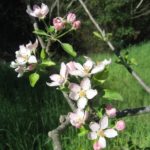 Good pollination is the one of the key factors to good fruit set. Fruit falls into three pollinating categories:
Good pollination is the one of the key factors to good fruit set. Fruit falls into three pollinating categories:
SELF-FERTILE (or SELF-POLLINATING) – this means the variety needs no help or pollen from another variety to set a crop of fruit.
NEEDS CROSS POLLINATION – These are two varieties that need each other’s pollen to order for each of them to set a crop of fruit.
FEMALE and MALE – Well, you probably don’t need any help figuring this out, so I will just note that the male doesn’t bear any fruit — only the female does.
Now beyond this, you only need to know a couple more things. If a plant needs cross pollination, or is a female-male pollinating group, it needs to be planted close enough for the bees to do their work. Tree crops should be 20 feet apart, nuts 40-60 feet, berries 6-10 feet and grapes 20-30 feet.Â
Also, they can’t do this alone. You need a good honeybee or other pollinating insect in the orchard at bloom time. If the weather is cold or wet, honey bees won’t fly. If you are consistently having trouble with fruit set, look into keeping bees or building better habitat for the native bees in your area.
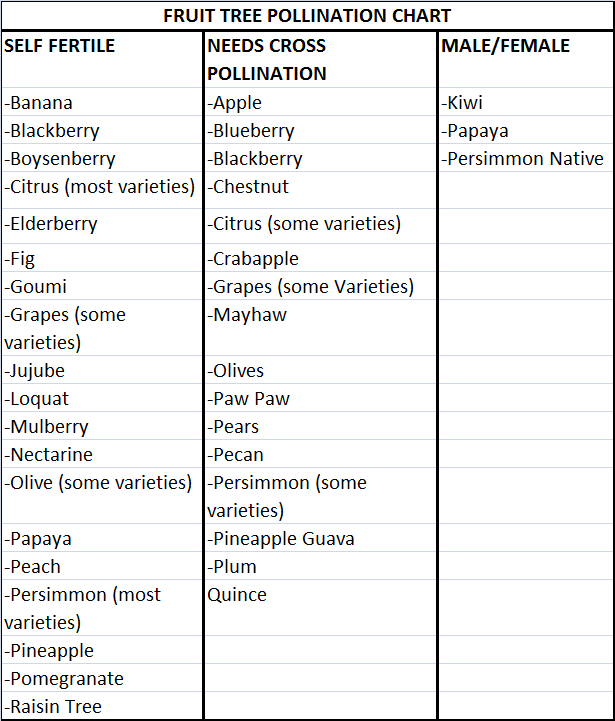
Root Stock and the Part it Plays…
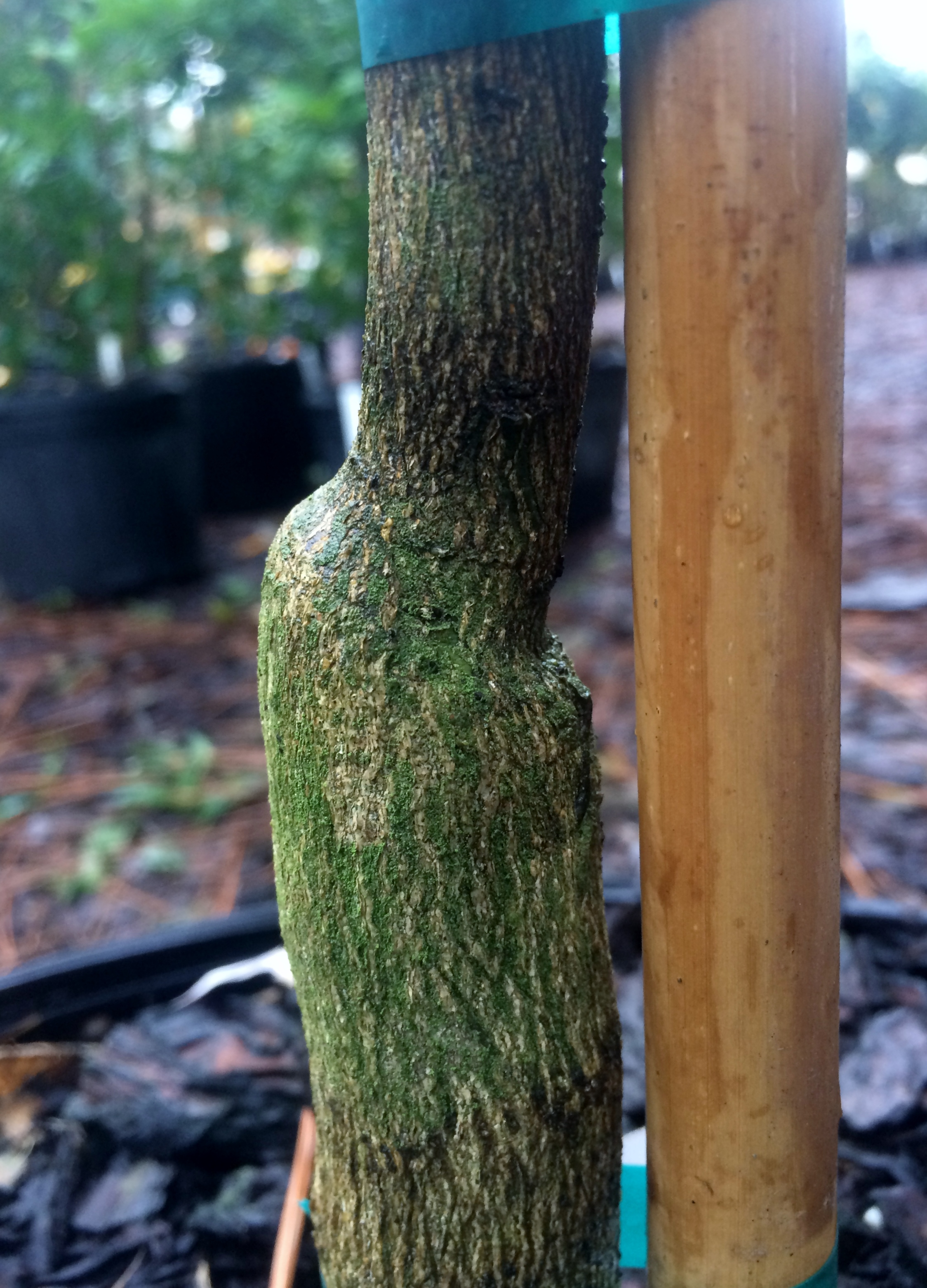 Most fruit trees are grafted, and it’s important to pay attention to what your trees are grafted on. The root stock plays the part of how well your tree will be able to fend off soil insects like nematodes and various fungi. It controls the size of the tree, making it smaller, easier to pick fruit and to cover if a freeze is predicted. It determines how well the tree stays dormant in winter which will help your tree with stand freezing weather. Avoid the dwarfing root stocks on apple, pear, peach, plum and nectarines in the Deep South. Most of these root stocks are designed for colder winters and they just don’t stand a chance against our wide assortment of bugs and fungi. If you have a small yard and need smaller trees, do a couple of summer pruning’s to control the height and spread of your trees.
Most fruit trees are grafted, and it’s important to pay attention to what your trees are grafted on. The root stock plays the part of how well your tree will be able to fend off soil insects like nematodes and various fungi. It controls the size of the tree, making it smaller, easier to pick fruit and to cover if a freeze is predicted. It determines how well the tree stays dormant in winter which will help your tree with stand freezing weather. Avoid the dwarfing root stocks on apple, pear, peach, plum and nectarines in the Deep South. Most of these root stocks are designed for colder winters and they just don’t stand a chance against our wide assortment of bugs and fungi. If you have a small yard and need smaller trees, do a couple of summer pruning’s to control the height and spread of your trees.
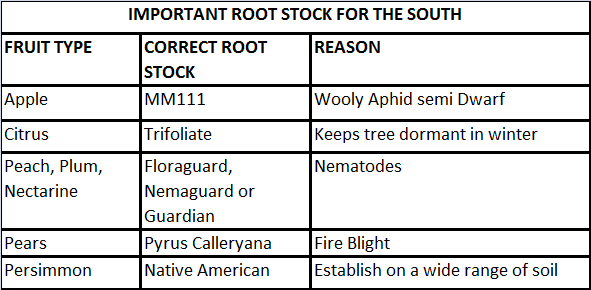
EXTEND YOUR SEASON
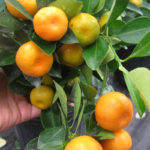 Living and gardening in the Lower South, we can come about as close to making this happen as anybody in the U.S. The trick is to learn to stretch your fruit season. By choosing varieties that ripen at different times, you can achieve the ultimate length of fruit season for each type of fruit you grow.
Living and gardening in the Lower South, we can come about as close to making this happen as anybody in the U.S. The trick is to learn to stretch your fruit season. By choosing varieties that ripen at different times, you can achieve the ultimate length of fruit season for each type of fruit you grow.
The year goes thus: early spring brings strawberry and mulberry. The summer is loaded with peaches, plums, apples and pears. The berry patch is in full swing with blackberry and blueberry. Late summer and fall are the time for jujube, pineapple guava and persimmon. The winter store is citrus, chestnuts and pecans.Â
